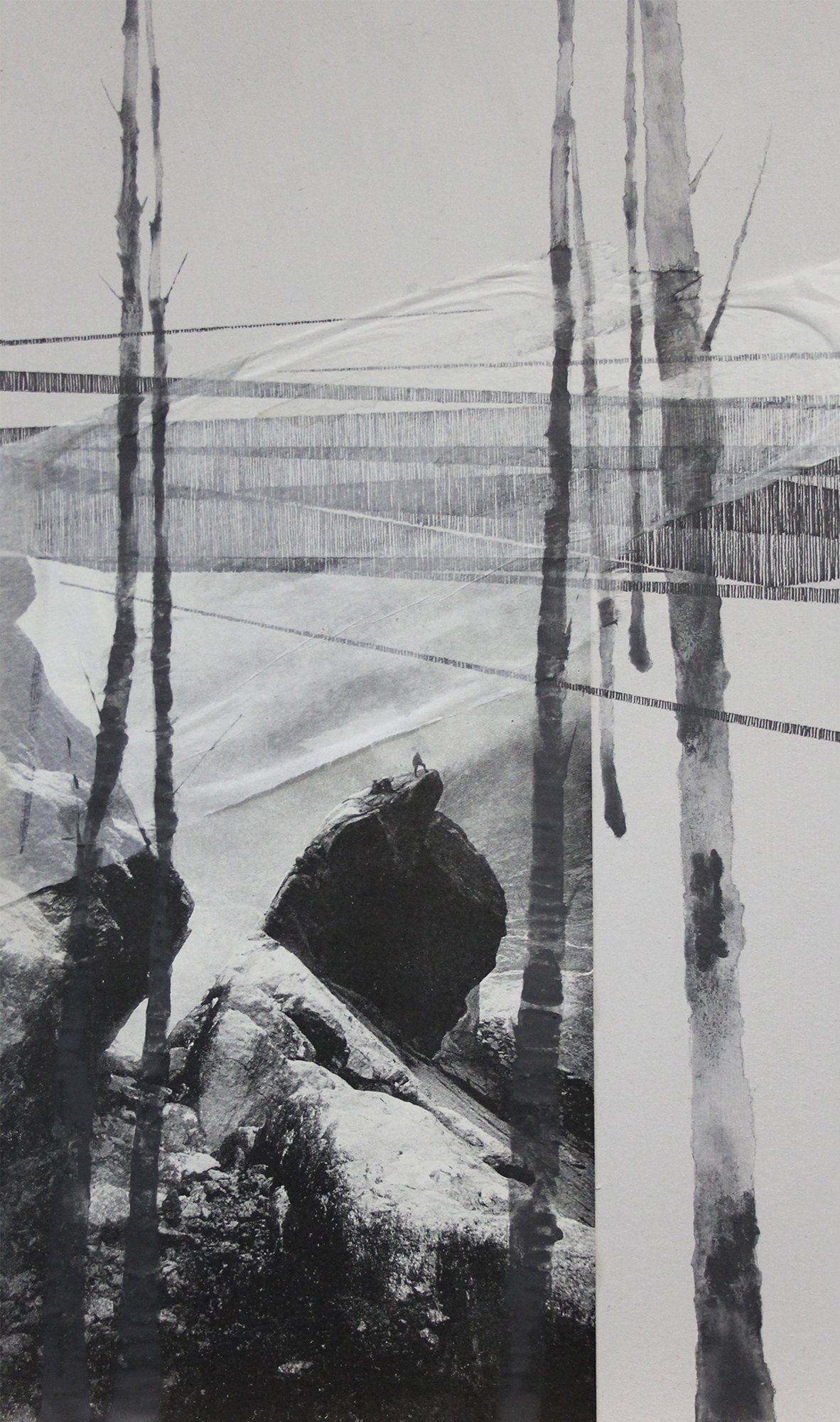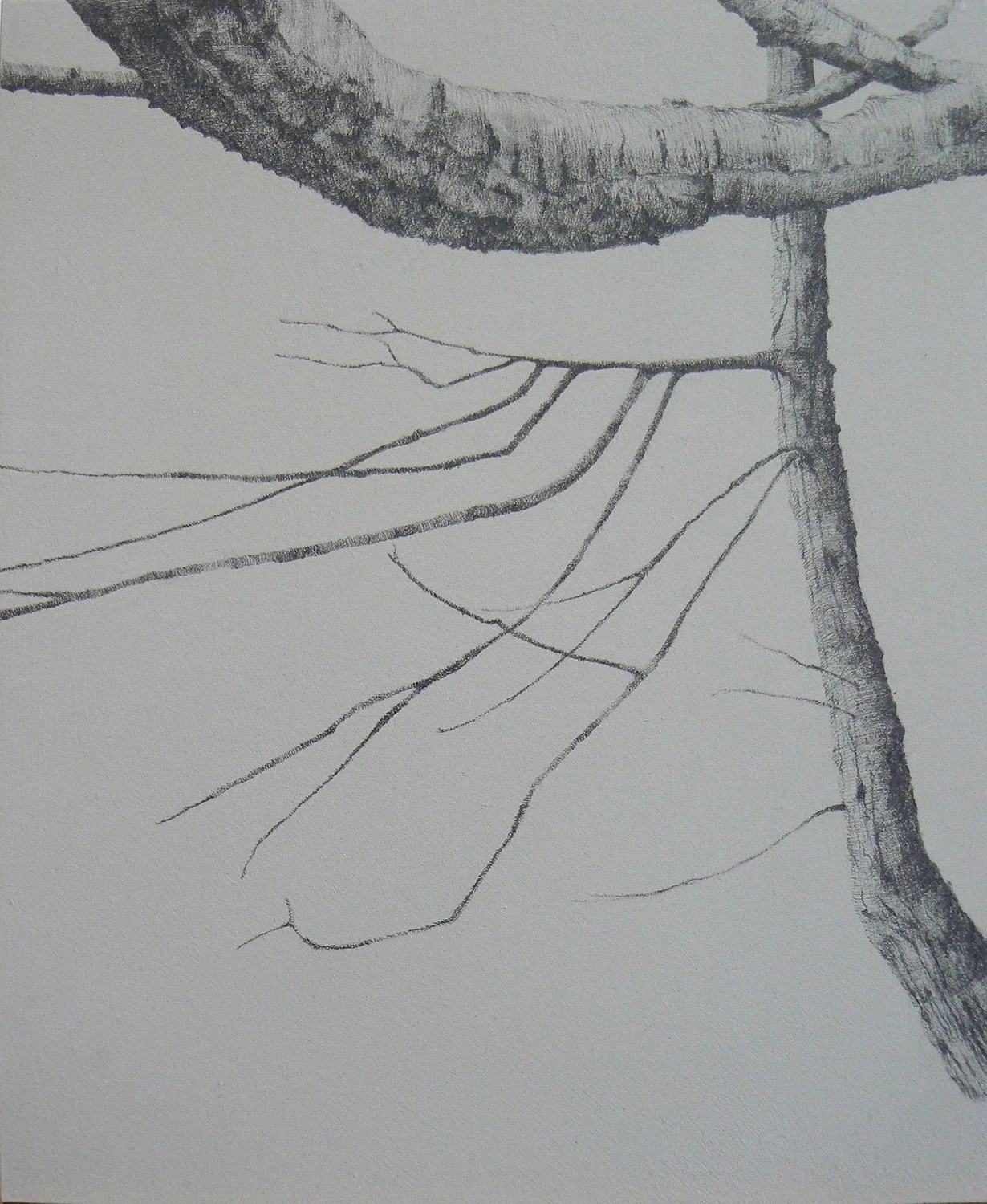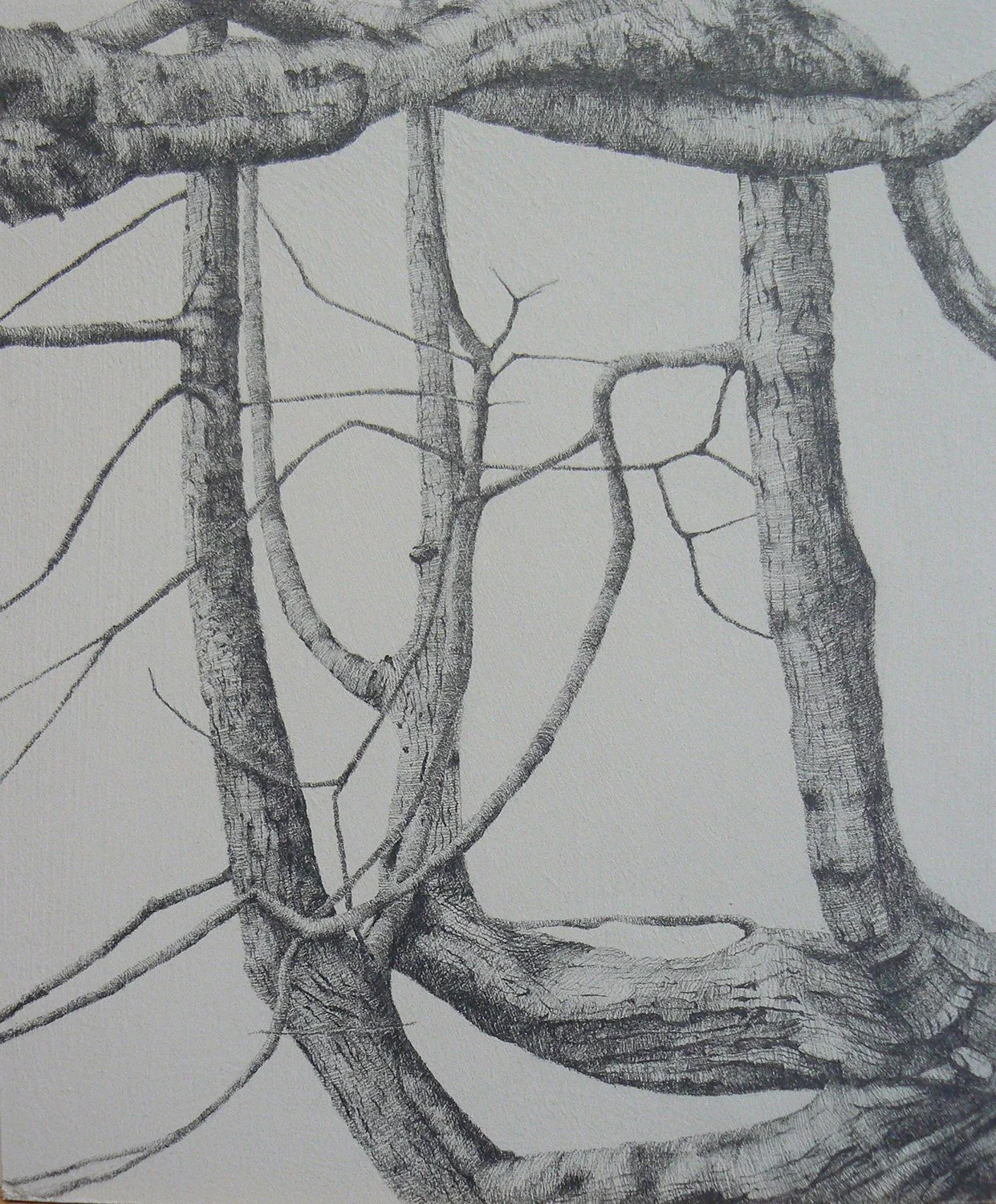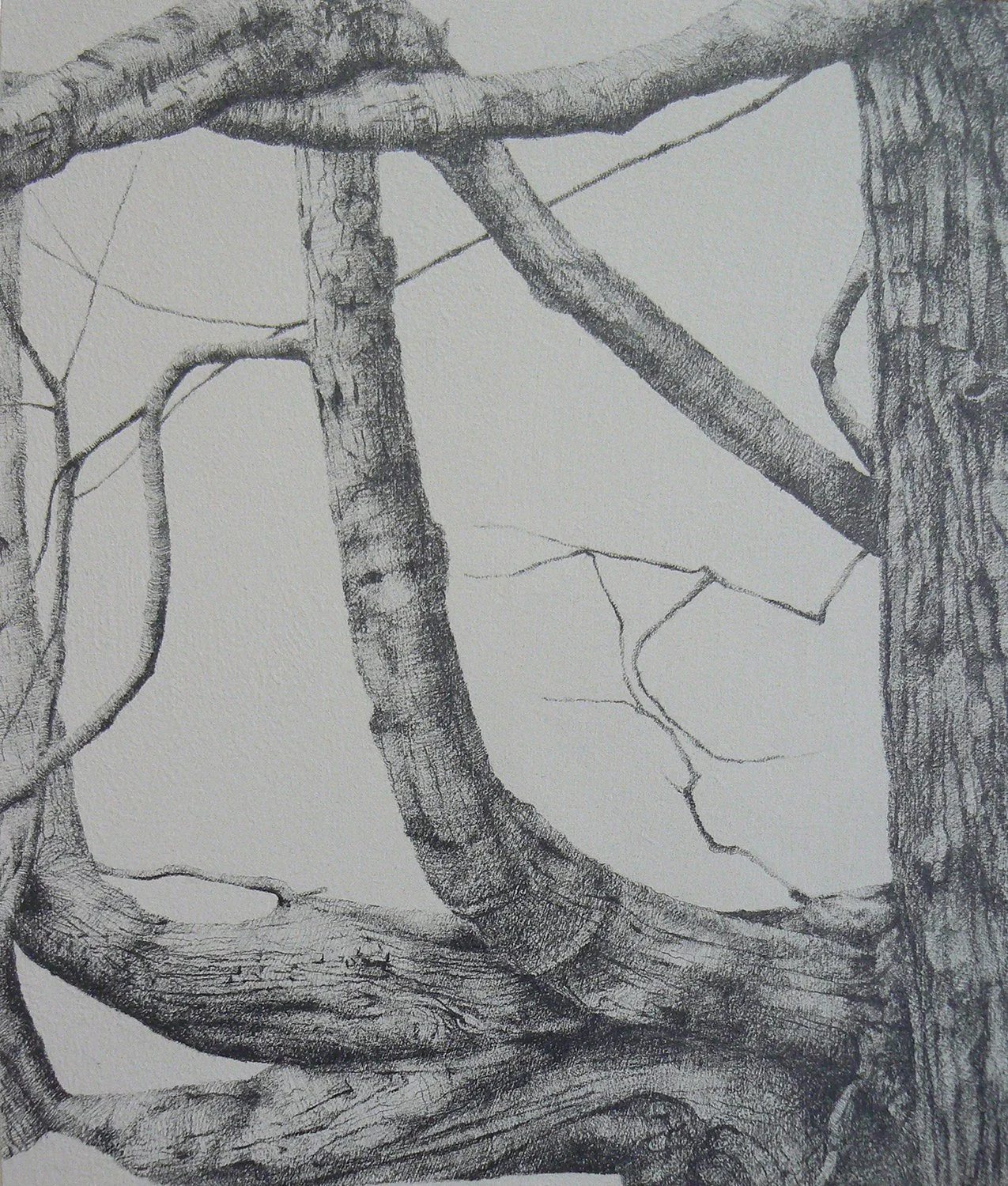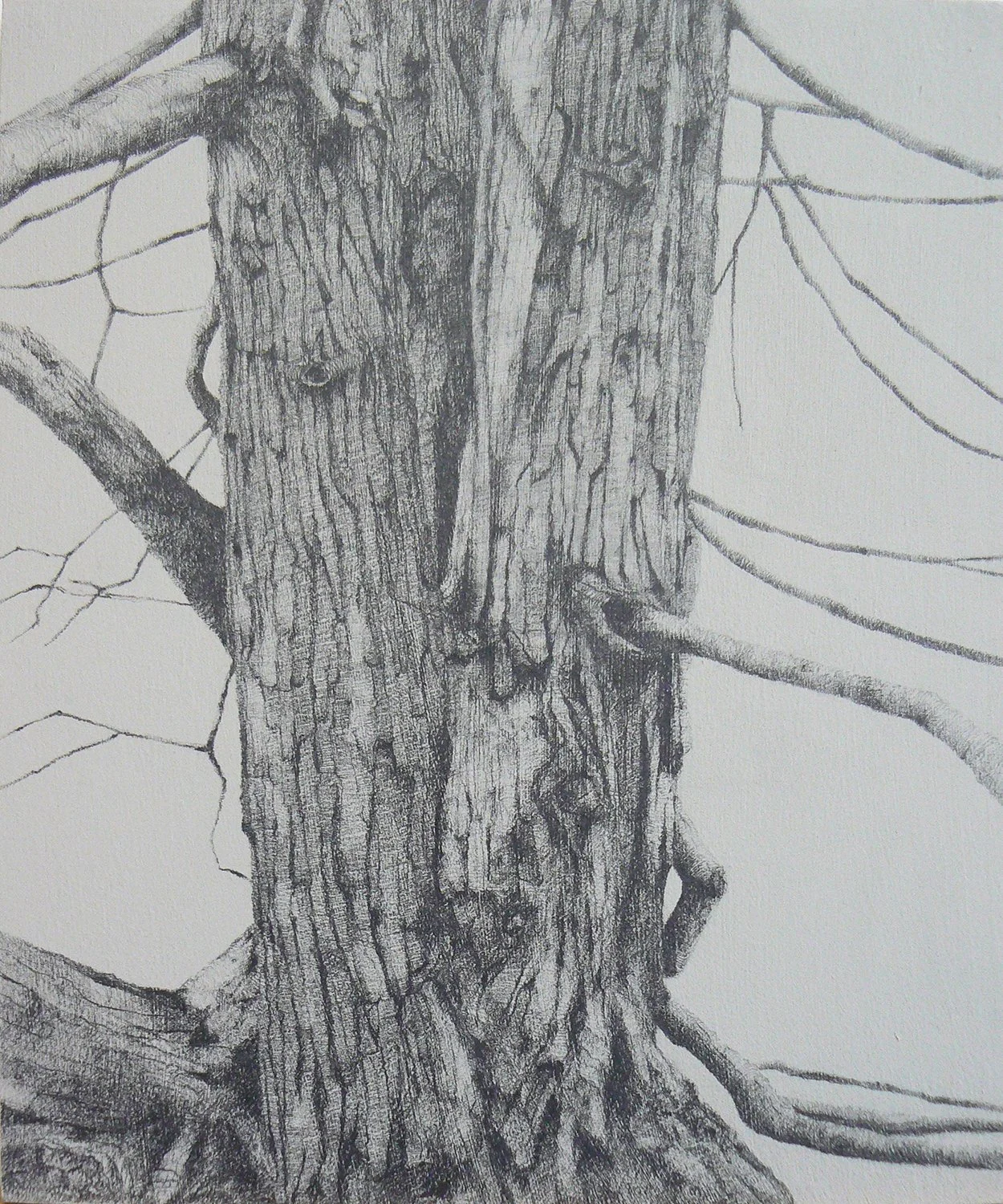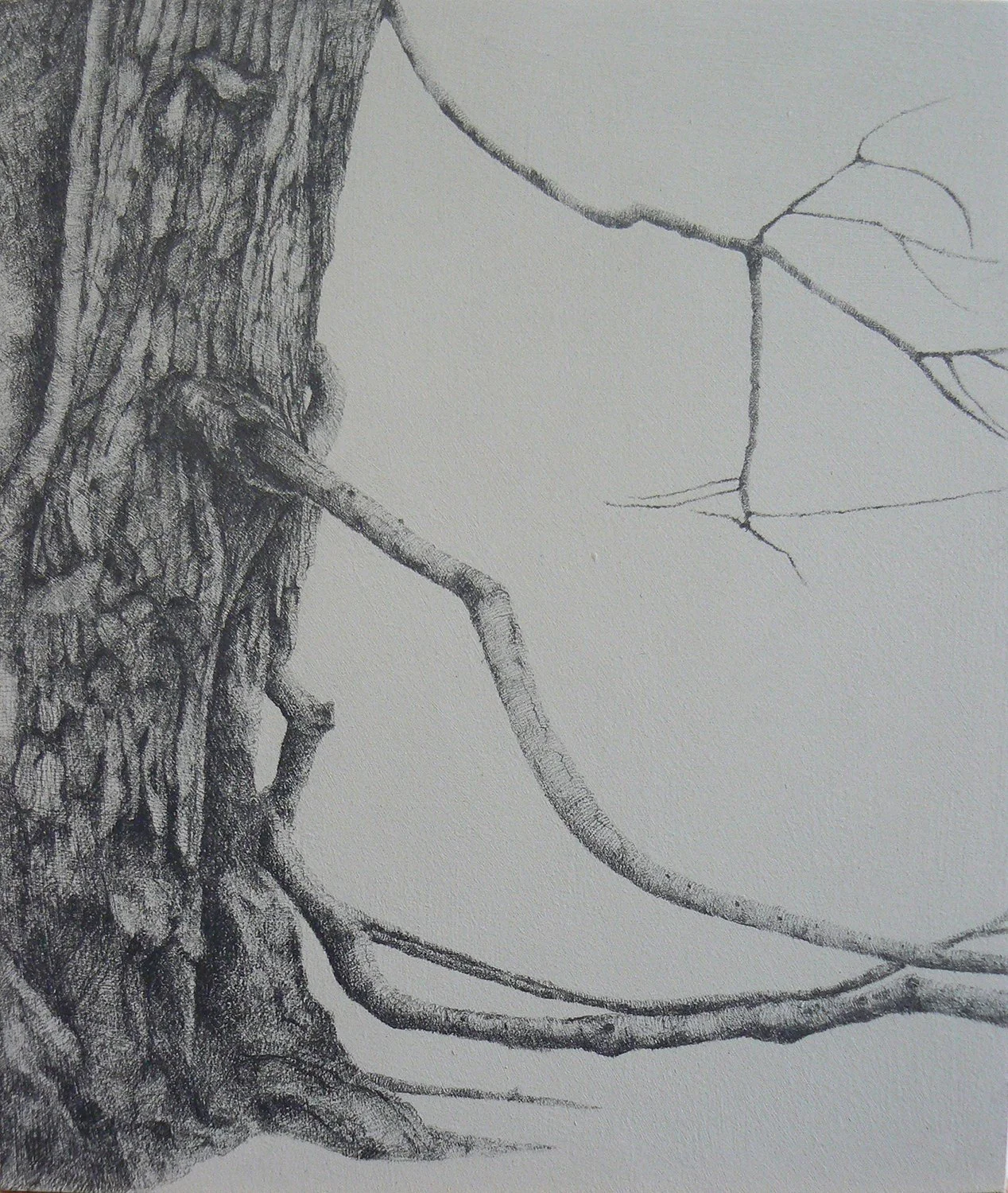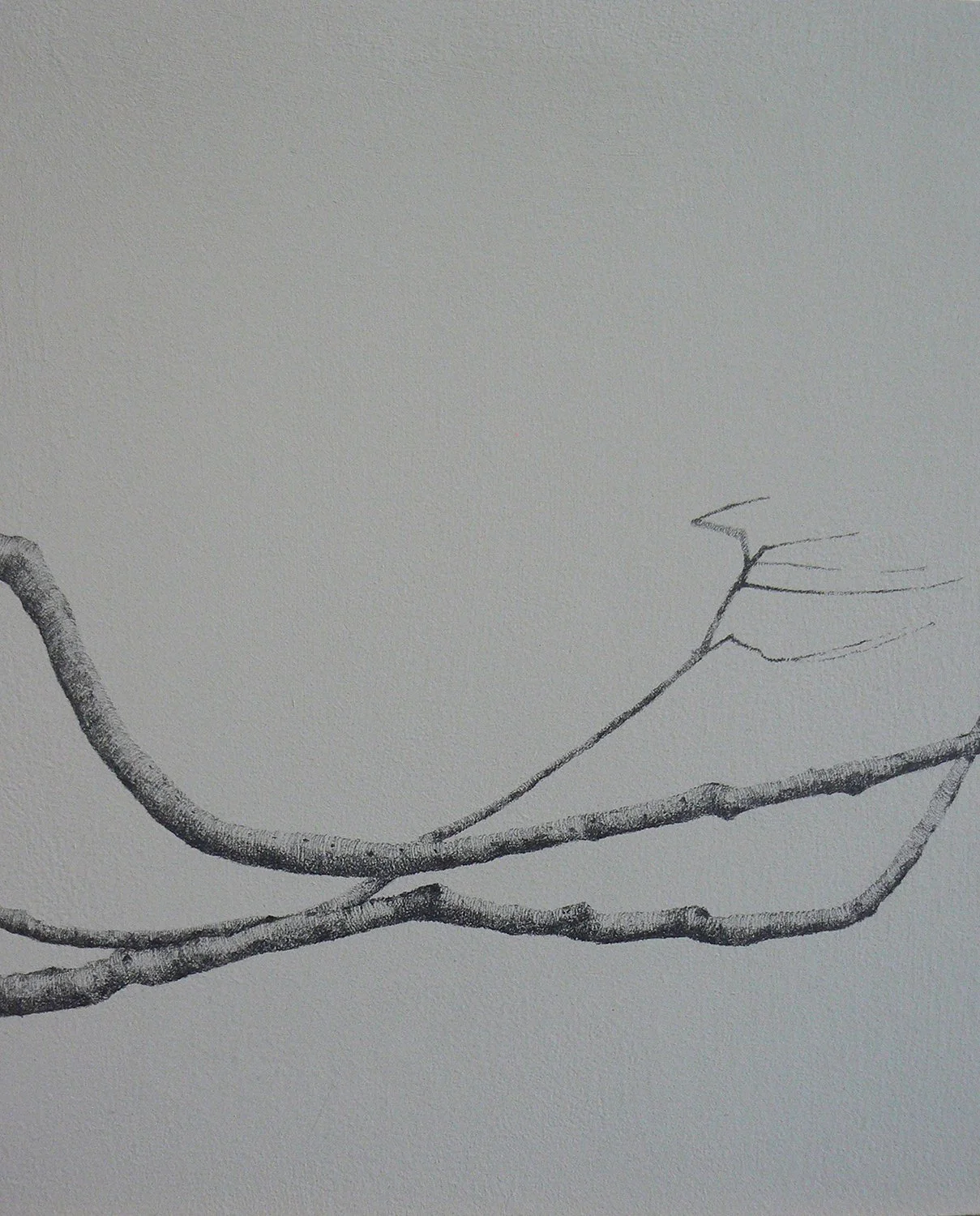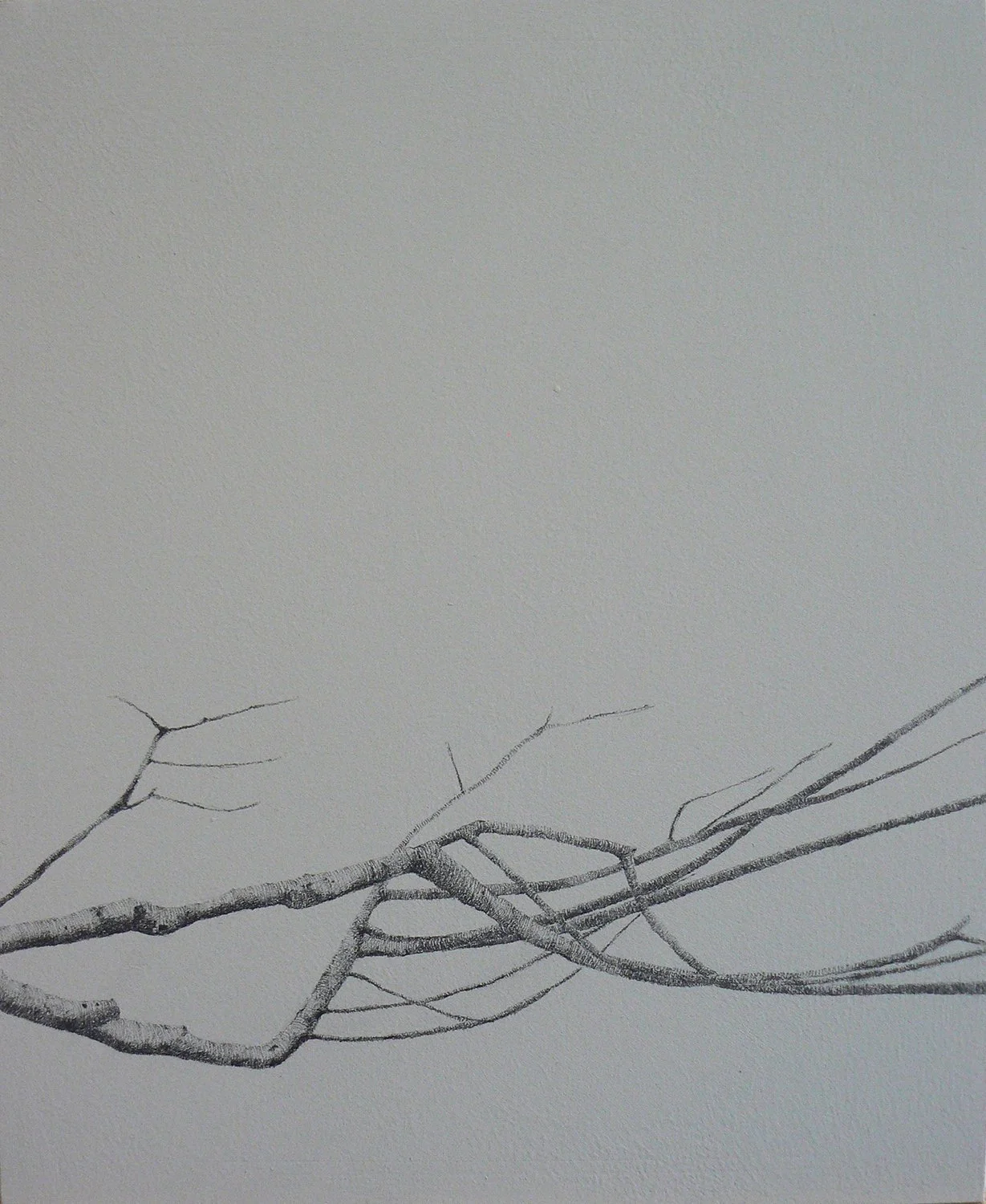Fossil Fish of the “Old Red” from the Collection of Eliza Maria Gordon-Cumming of Altyre (1798-1842)
The 7th John Ruskin Prize Exhibition, “From the Eye to the Hand” 2025, Trinity Buoy Wharf, London
34cm H x 155cm W
Pencil on paper
Eliza Maria Gordon-Cumming was a natural philosopher. Her work between horticulture, palaeoichthyology (the study of fossil fish) and curation places her amongst the 19th century women who collected for the advancement of human knowledge. Drawing is an intellectual activity somewhere between observation, transcription and invention. With a forensic eye and a careful hand Eliza studied her collection in depth, drawing out the strange topography of fish and stone and ultimately, combining fossil fragments in new, as yet unimagined anatomies. “Old Red” refers to Middle Old Red Sandstone from the Orcadian Basin, an ancient ocean floor between Moray and Shetland.
The John Ruskin Prize was founded by The Guild of St. George in 2012, under the administrative umbrella of The Big Draw supported by the Trinity Buoy Wharf Trust. The Guild of St George is the charity for arts, crafts and the rural economy founded in 1871 by the Victorian art and social critic, John Ruskin (1819-1900).







